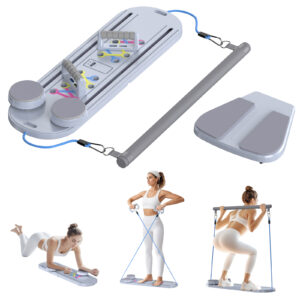Dear friends,
I hope this message finds you well and in good spirits. As you continue on your yoga journey, I wanted to take a moment to share some valuable insights on incorporating recovery into your practice. Whether you’re recovering from an injury, overexertion, or simply looking to support your body, yoga can be an incredible tool for healing.
1. Listen to Your Body
The first and most important principle of recovery is listening to your body. It’s natural to push yourself in class, but when you’re in recovery mode, it’s crucial to honor any discomfort or fatigue. If a particular posture feels too intense or painful, make adjustments or take a rest. Remember, yoga is about building awareness and balance, not forcing through discomfort.
2. Embrace Restorative Yoga
Restorative yoga is a gentle practice that focuses on relaxation and healing. It involves using props such as blocks, blankets, and straps to support the body in postures that allow deep relaxation. By holding poses for longer periods, restorative yoga encourages the body to release tension and improve circulation, which aids in recovery.
3. Incorporate Breathwork
Pranayama (breathing exercises) plays a pivotal role in recovery. Deep, mindful breathing activates the parasympathetic nervous system, promoting relaxation and reducing stress. Simple breathing techniques like Nadi Shodhana (alternate nostril breathing) or Ujjayi (victorious breath) can help calm the mind and relax the muscles. Incorporating breathwork into your practice will assist in your body’s natural healing process.
4. Focus on Gentle Stretches
When recovering, try to focus on gentle stretching and mobility exercises. Poses like Cat-Cow (Marjaryasana-Bitilasana), Child’s Pose (Balasana), and Supta Baddha Konasana (Reclining Bound Angle Pose) can help restore flexibility and release tightness without overloading the body. Pay attention to areas that may need extra care, such as your lower back, hips, and shoulders.
5. Hydration and Nutrition
Proper hydration and nutrition are essential for the recovery process. Make sure you’re drinking plenty of water throughout the day, especially after your practice. Eating whole foods that are rich in vitamins and minerals—such as leafy greens, nuts, and fruits—will help speed up tissue repair and reduce inflammation.
6. Patience and Consistency
Recovery takes time, so be patient with yourself. Yoga isn’t a quick fix, but a steady and consistent practice can make a significant difference over time. Even if you’re not practicing at full intensity, maintaining regular sessions will help keep your body aligned and supported during the healing process.
7. Incorporate Mindfulness and Meditation
A quiet mind can aid in faster healing. Practicing mindfulness and meditation helps reduce mental and emotional stress, which in turn supports physical recovery. Taking just a few minutes each day to sit in stillness or focus on a mantra can have a profound impact on both your mind and body.
8. Rest is as Important as Practice
Lastly, don’t forget the power of rest. Recovery isn’t just about doing more—it’s also about giving your body the space it needs to heal. Be sure to balance your practice with adequate rest, sleep, and time for relaxation.
If you have any questions about your practice or recovery, feel free to reach out to me. I’m here to support you on your healing journey, and I’m so proud of the effort you’re putting in.
Wishing you peace and progress on your path.
Warmly,
AddWin Team






